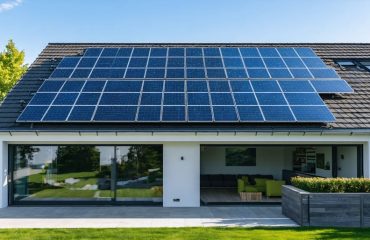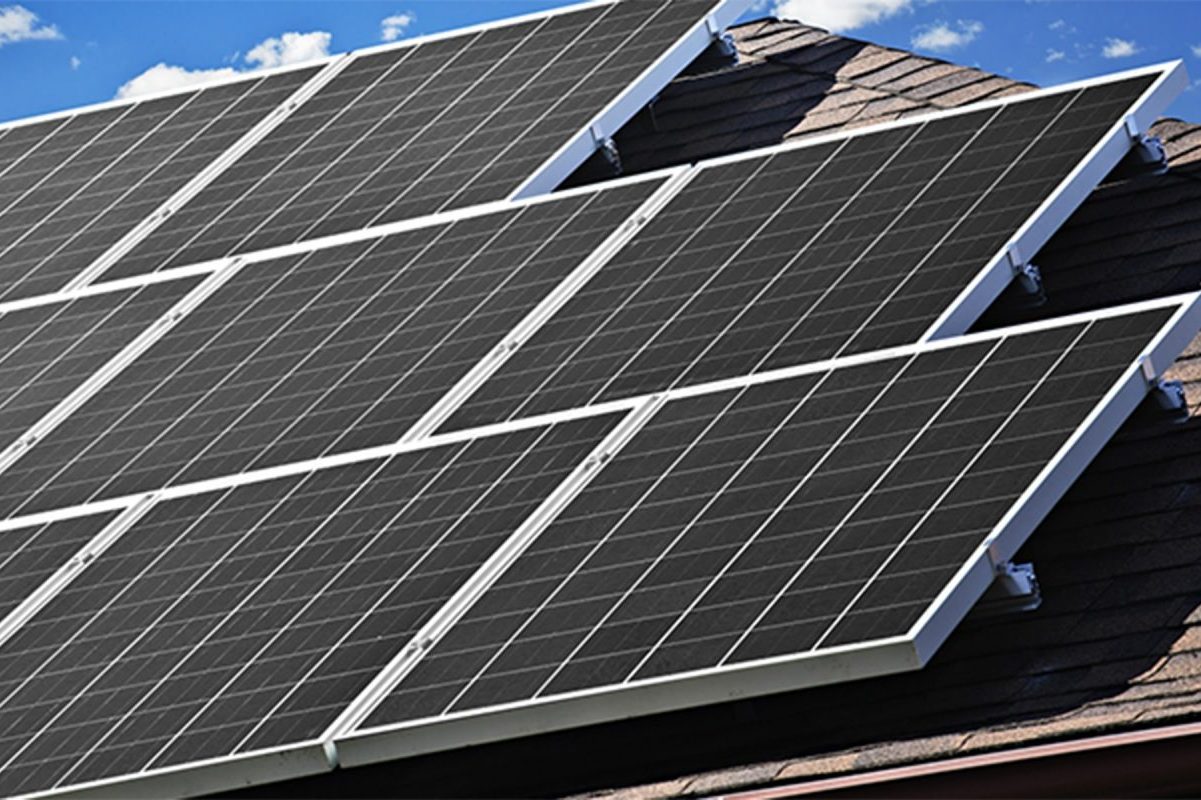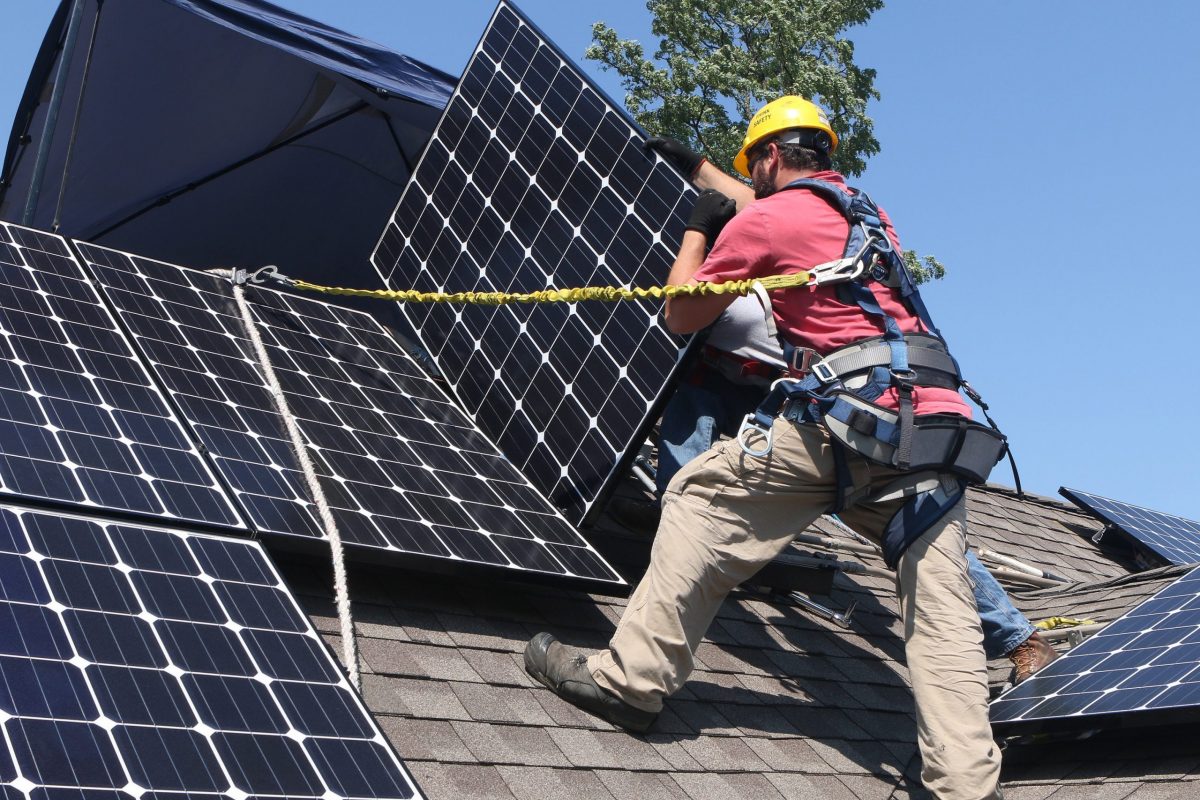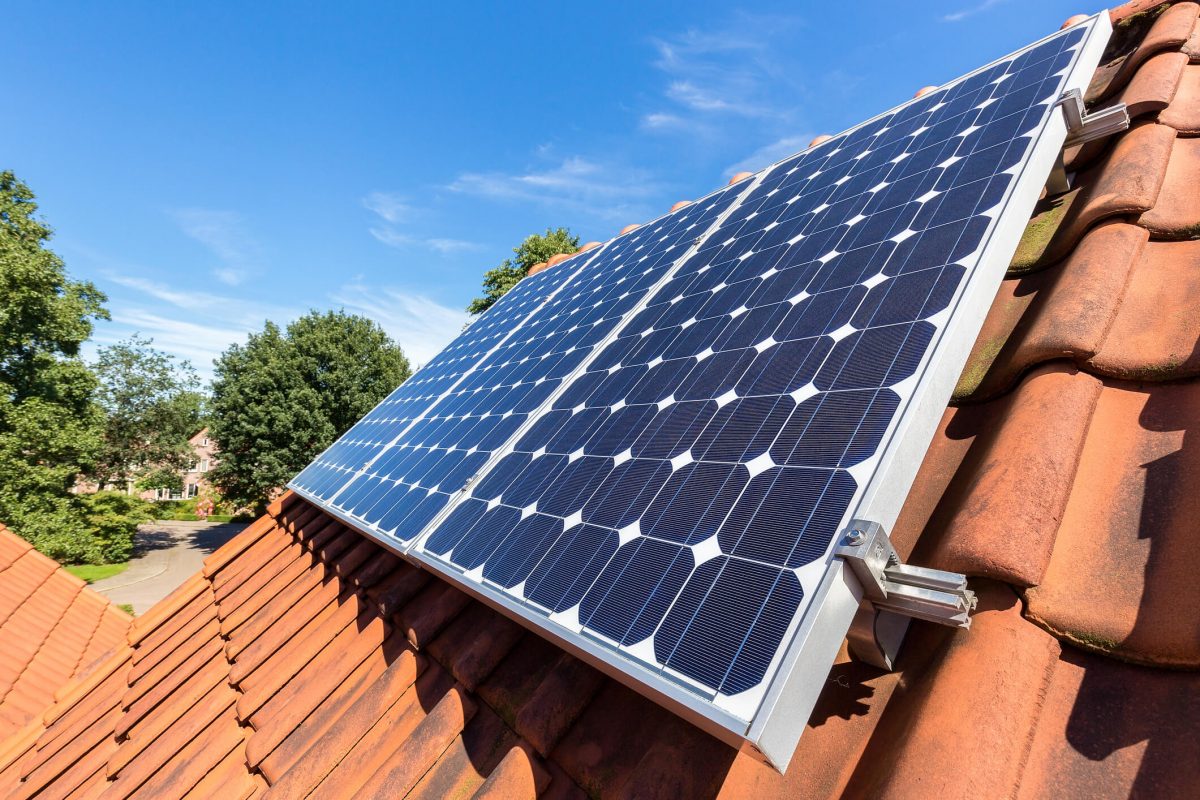Solar energy isn’t just transforming how we power our homes – it’s revolutionizing entire economies. As installation costs plummet and technology advances, solar power has emerged as a powerful economic catalyst, creating ripple effects from individual households to the global marketplace.
The financial impact starts at home, where average American families save $10,000-30,000 on energy costs over their solar panels’ lifetime. Property values typically increase by 4.1% with solar installations, adding tangible worth to residential investments. Beyond individual benefits, the solar industry has become a jobs powerhouse, employing over 250,000 Americans and growing 167% faster than the overall U.S. economy over the past decade.
This shift extends far beyond residential rooftops. Utility-scale solar projects are reshaping rural economies, providing steady land lease income to farmers and tax revenue to communities. Meanwhile, manufacturing facilities, research centers, and installation companies create economic clusters that attract additional investment and innovation.
As grid parity becomes reality in more regions, solar energy’s economic advantages are becoming impossible to ignore. The transition to solar isn’t just an environmental choice – it’s increasingly a smart financial decision driving sustainable economic growth across multiple sectors.
The Financial Benefits of Going Solar
Immediate Utility Bill Savings
Installing solar panels can lead to substantial reductions in your monthly utility bills from day one. With today’s revolutionary solar technology, homeowners typically see their electricity bills drop by 50-90%, depending on their system size and local sunshine conditions. Many households report monthly savings between $100 and $200, with some saving even more in regions with higher electricity rates.
These savings begin immediately after installation and continue to grow as utility rates increase over time. For example, if your current monthly electric bill is $150, switching to solar could reduce it to as little as $15-75, potentially saving you over $1,000 annually. The savings are even more pronounced during peak summer months when traditional electricity costs surge due to increased air conditioning usage.
What’s particularly appealing is that these savings are predictable and guaranteed – unlike variable utility rates, your solar energy costs remain stable. Many homeowners use these monthly savings to offset their solar installation payments, making the transition to solar power practically budget-neutral from the start.
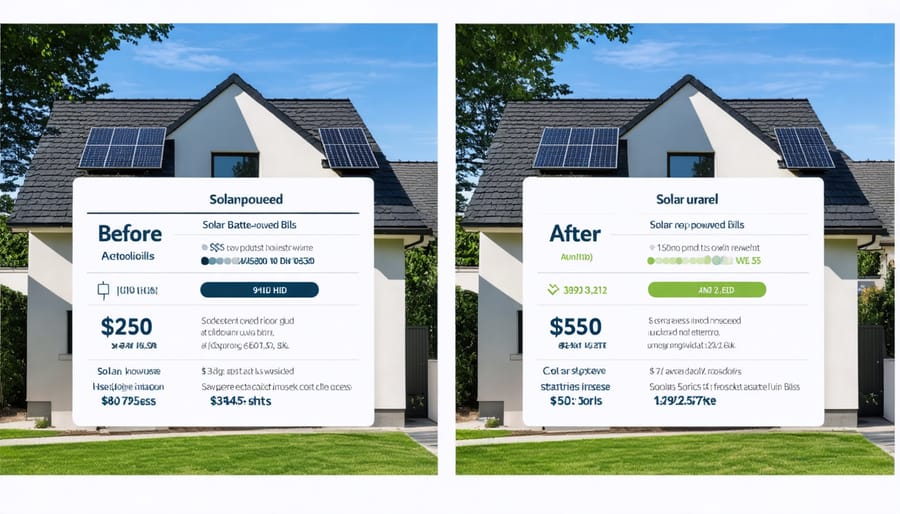
Tax Incentives and Rebates
Homeowners looking to embrace solar energy can benefit from numerous financial incentives at multiple government levels. The federal Solar Investment Tax Credit (ITC) remains one of the most significant benefits, allowing homeowners to deduct 30% of their solar system costs from their federal taxes through 2032. This credit applies to both equipment and installation costs.
Many states offer additional tax breaks and incentives. These can include property tax exemptions for the added home value from solar installations, sales tax exemptions on solar equipment purchases, and performance-based incentives that pay homeowners for the energy their systems produce. Some states also provide upfront rebates that can reduce initial installation costs by thousands of dollars.
Local utilities and municipalities frequently offer their own incentive programs, including net metering arrangements that credit homeowners for excess energy production, low-interest financing options, and direct cash rebates. Combined with federal and state incentives, these programs can reduce the total cost of going solar by 50% or more, significantly shortening the payback period on your investment.
Property Value Enhancement
Installing solar panels can significantly boost your home’s market value. According to recent studies, homes with solar installations typically sell for 4.1% more than comparable properties without solar. For a median-valued home, this translates to an additional $9,500 in resale value. Buyers increasingly prioritize energy-efficient features and are willing to pay premium prices for homes with pre-installed solar systems. The value increase is particularly notable in environmentally conscious markets and areas with high electricity costs. Additionally, homes with solar installations tend to sell faster than those without, spending an average of 20% less time on the market. This property value enhancement effectively serves as an additional return on investment, complementing the monthly energy savings that solar panels provide.
Job Creation and Economic Growth
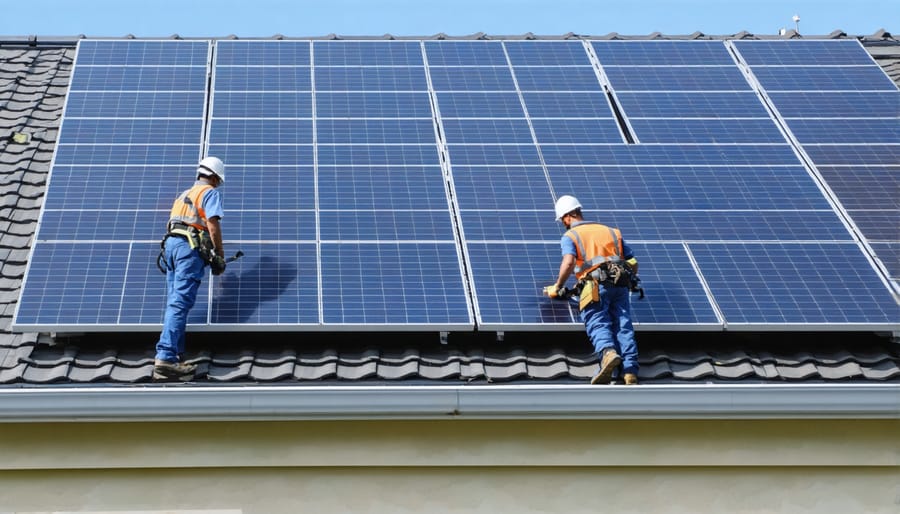
Solar Industry Employment
The solar industry has emerged as one of the fastest-growing job creators in the modern economy. In recent years, solar employment has consistently outpaced the overall job market, creating opportunities across various skill levels and career paths. From installers and electricians to sales representatives and project managers, the industry offers diverse employment options for both technical and non-technical professionals.
Solar installation companies are particularly active employers, with many offering comprehensive training programs for newcomers to the field. These positions often provide competitive wages and benefits, with solar installers earning above-average salaries compared to similar construction trades. The industry also creates indirect jobs in manufacturing, distribution, and support services.
What’s particularly encouraging is the industry’s stability and growth potential. Unlike traditional energy sectors, solar jobs are largely immune to automation and outsourcing, as they require local, hands-on work. Rural communities have especially benefited from solar development, with large-scale solar farms creating long-term employment opportunities in areas that traditionally struggled with job growth.
For job seekers, the solar industry offers clear career advancement paths, with many entry-level positions leading to supervisory and management roles. Professional certifications and specialized training programs continue to expand, making it easier for individuals to enter and progress in the field.
Local Business Development
The solar energy industry has become a powerful driver of local economic growth, creating numerous opportunities for small businesses and entrepreneurs. Installation companies, in particular, have experienced remarkable growth, with many starting as small local operations and expanding into regional powerhouses. These businesses typically hire and train local workers, providing stable, well-paying jobs that can’t be outsourced.
Beyond installation companies, the solar industry supports a diverse ecosystem of related businesses. Local electrical contractors, roofing specialists, and maintenance services have expanded their offerings to include solar-specific services. Equipment suppliers, wholesalers, and distributors have established new locations to meet growing demand, while marketing agencies and financial services firms have developed specialized expertise in the solar sector.
The ripple effect extends to other areas of the local economy. Training centers and technical schools have introduced solar certification programs, creating educational opportunities. Real estate agents have developed expertise in solar home valuations, while local banks have created specialized solar lending products. This business ecosystem continues to grow as more homeowners embrace solar energy, creating a sustainable cycle of economic development that benefits entire communities through increased tax revenue, job creation, and business diversity.
Energy Independence and Price Stability
Protection from Energy Price Fluctuations
One of solar energy’s most compelling advantages is its ability to shield homeowners from unpredictable energy costs. Unlike traditional electricity rates, which can fluctuate dramatically based on fuel prices, geopolitical events, and market conditions, solar power provides consistent, predictable energy costs for decades.
When you install solar panels, you essentially prepay for most of your electricity needs upfront or through fixed monthly payments. This arrangement lets you lock in your energy costs for 25-30 years, which is the typical lifespan of quality solar panels. Think of it as purchasing your power in bulk at today’s prices, protecting yourself from future rate increases.
Historical data shows that utility electricity rates typically rise 2-3% annually. By switching to solar, homeowners can avoid these continuous price hikes. For example, if you’re currently paying $150 monthly for electricity, you could save thousands over the next decade as rates continue to climb while your solar costs remain stable.
Many solar installations also come with comprehensive warranties and performance guarantees, further ensuring cost predictability. Additionally, net metering programs allow homeowners to earn credits for excess energy production, providing a buffer against seasonal variations in energy costs and consumption.
This financial stability makes budgeting easier and provides peace of mind, knowing that your energy costs won’t unexpectedly spike during times of market volatility.
Grid Reliability Benefits
Solar energy’s distributed generation model offers significant benefits for grid reliability and stability. Unlike traditional power plants, solar installations spread across numerous locations create a more resilient power network. When homeowners install solar panels, they reduce strain on the electrical grid during peak demand hours, particularly on hot summer days when air conditioning usage soars.
This decentralized approach to power generation helps prevent widespread blackouts and reduces the need for expensive grid infrastructure upgrades. While there are some grid integration challenges, modern solar systems with smart inverters actually enhance grid stability by providing voltage and frequency support.
The economic advantages extend beyond individual households. Utilities save money on transmission infrastructure and maintenance costs, while communities benefit from increased energy independence and reduced power outage risks. During extreme weather events or grid disruptions, areas with high solar adoption maintain better energy security, protecting local businesses from costly downtime.
Additionally, the growth of solar installations has spurred innovation in grid management technologies, creating new business opportunities and jobs in the smart grid sector. These improvements in grid infrastructure benefit all electricity consumers, not just solar adopters, by creating a more efficient and reliable power system that can adapt to changing energy demands.
Future Economic Prospects
Technology Cost Reductions
One of the most exciting developments in solar energy is the dramatic decrease in costs over the past decade. Since 2010, the average cost of installing solar panels has dropped by more than 70%, making renewable energy more accessible than ever for homeowners. This significant price reduction is largely due to improved manufacturing processes, increased competition among suppliers, and latest solar panel innovations.
Equipment costs have seen particularly impressive reductions, with solar panels now costing a fraction of what they did just a few years ago. The average cost per watt has fallen from over $7 in 2010 to around $2.50 today, before tax incentives. Installation costs have also decreased as more qualified contractors enter the market and installation processes become more streamlined.
These cost reductions, combined with government incentives and rebates, have shortened the payback period for solar installations from 10-12 years to as little as 5-7 years in many areas. This makes solar energy not just an environmentally conscious choice, but an increasingly smart financial decision for homeowners looking to reduce their energy costs.
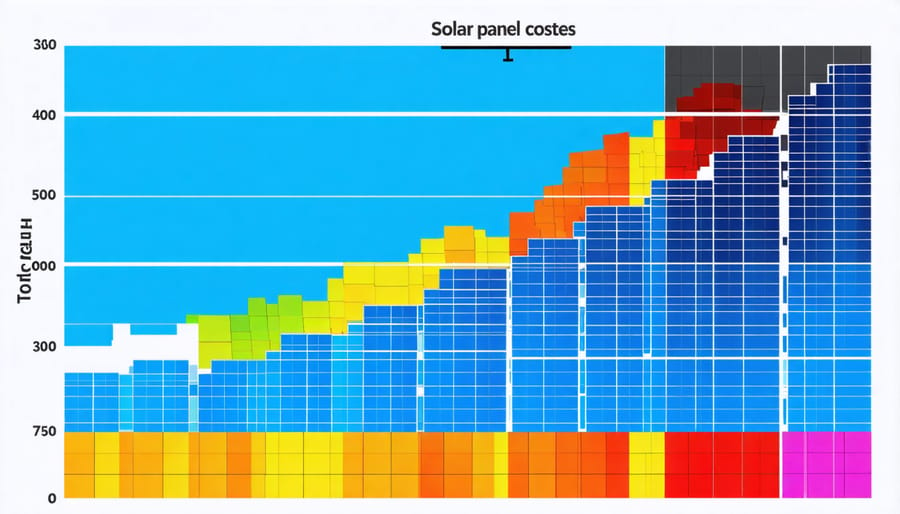
Energy Storage Integration
The combination of solar panels with battery storage systems creates a powerful economic advantage for homeowners. When you add batteries to your solar setup, you can store excess energy produced during sunny days and use it during peak evening hours or cloudy days, maximizing your energy independence and savings.
Battery storage helps avoid higher time-of-use rates from utility companies by allowing you to use your stored solar energy during expensive peak hours. This strategic energy management can lead to additional savings of 20-40% on your electricity bills compared to solar panels alone.
The falling prices of battery technology have made this combination increasingly attractive. While adding storage does increase initial costs, many homeowners find the investment worthwhile through enhanced energy security, increased utility savings, and potential income from grid services. Some utility companies even offer incentives for battery installation, recognizing the grid-stabilizing benefits of distributed storage.
As more homeowners adopt solar-plus-storage systems, the growing demand continues to drive down costs while improving technology, making this combination increasingly economical for future adopters.
Smart Grid Development
The modernization of our power grid represents one of the most promising economic opportunities in the solar energy sector. Smart grid development combines advanced digital technology with traditional power infrastructure, creating a more efficient and responsive energy system. This integration allows for better management of solar power generation and storage, leading to reduced energy costs for homeowners and utilities alike.
As more communities adopt solar power, smart grids are becoming essential for managing the two-way flow of electricity between homes and the power grid. This infrastructure upgrade is creating thousands of new jobs in technology, installation, and maintenance sectors. According to industry estimates, smart grid development could generate over $500 billion in economic benefits over the next decade.
For homeowners, smart grid technology means more control over energy usage and costs. Advanced metering systems provide real-time data about energy consumption and production, helping solar panel owners optimize their energy use. These improvements align with current global solar energy trends, showing how grid modernization is becoming a crucial component of sustainable energy development worldwide.
Solar energy has proven to be more than just an environmentally conscious choice – it’s a smart financial decision that continues to reward homeowners year after year. The economic benefits are clear: significant reduction in monthly utility bills, increased property values, and protection against rising energy costs. With installation costs dropping by over 70% in the past decade and various tax incentives still available, there’s never been a better time to invest in solar power.
For homeowners, the math is compelling. Most solar installations pay for themselves within 5-8 years, after which they continue to generate free electricity for decades. When combined with modern battery storage solutions, the savings become even more substantial, offering true energy independence and financial security.
The broader economic impact is equally impressive, with the solar industry creating thousands of local jobs and stimulating economic growth in communities across the country. As technology continues to improve and costs decrease further, solar energy’s role in our economy will only grow stronger.
Don’t wait to join the solar revolution. Take the first step today by getting a professional assessment of your home’s solar potential. With flexible financing options, strong government incentives, and proven return on investment, solar power represents not just a path to a cleaner future, but a sound financial decision that benefits both your wallet and your community.





